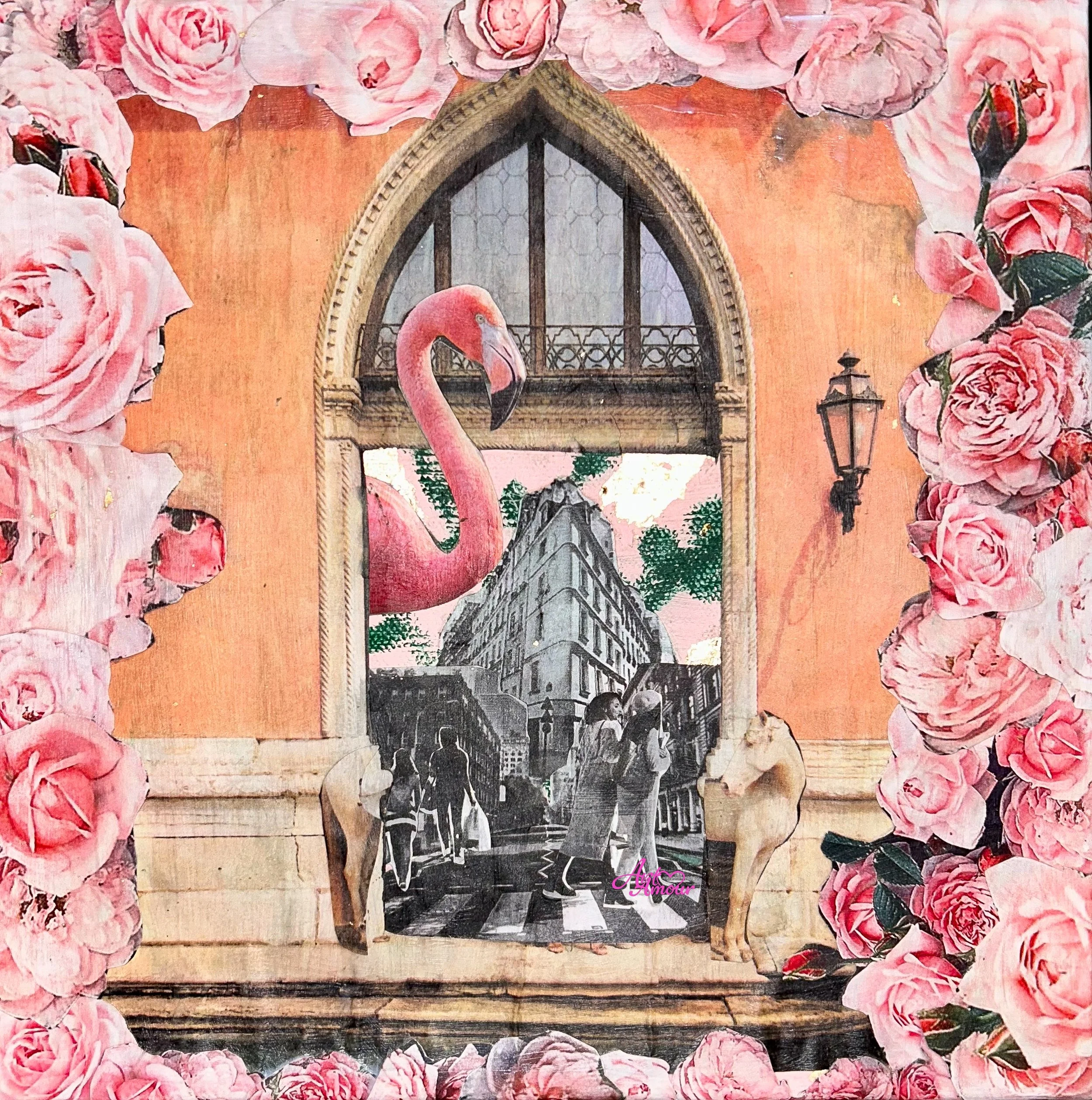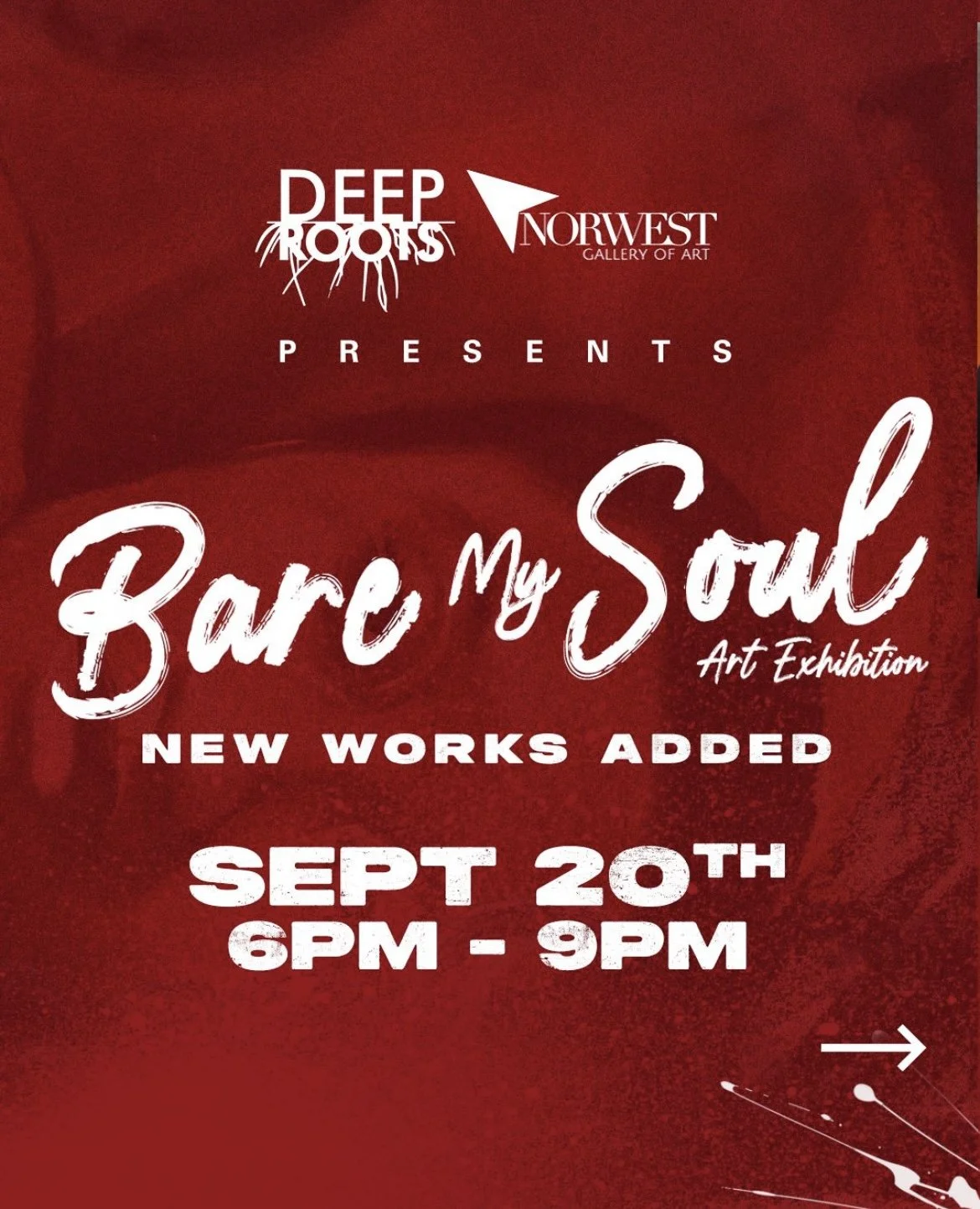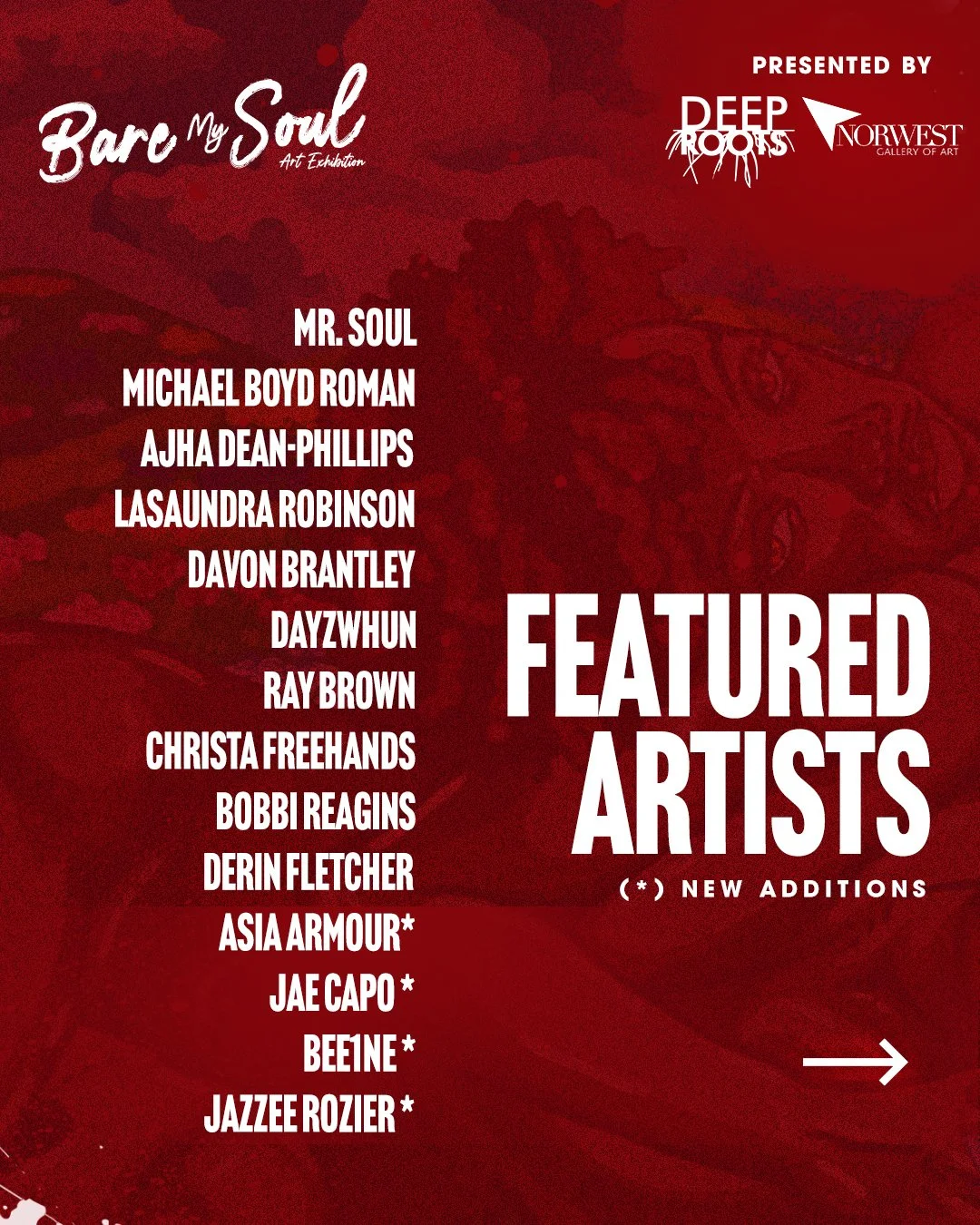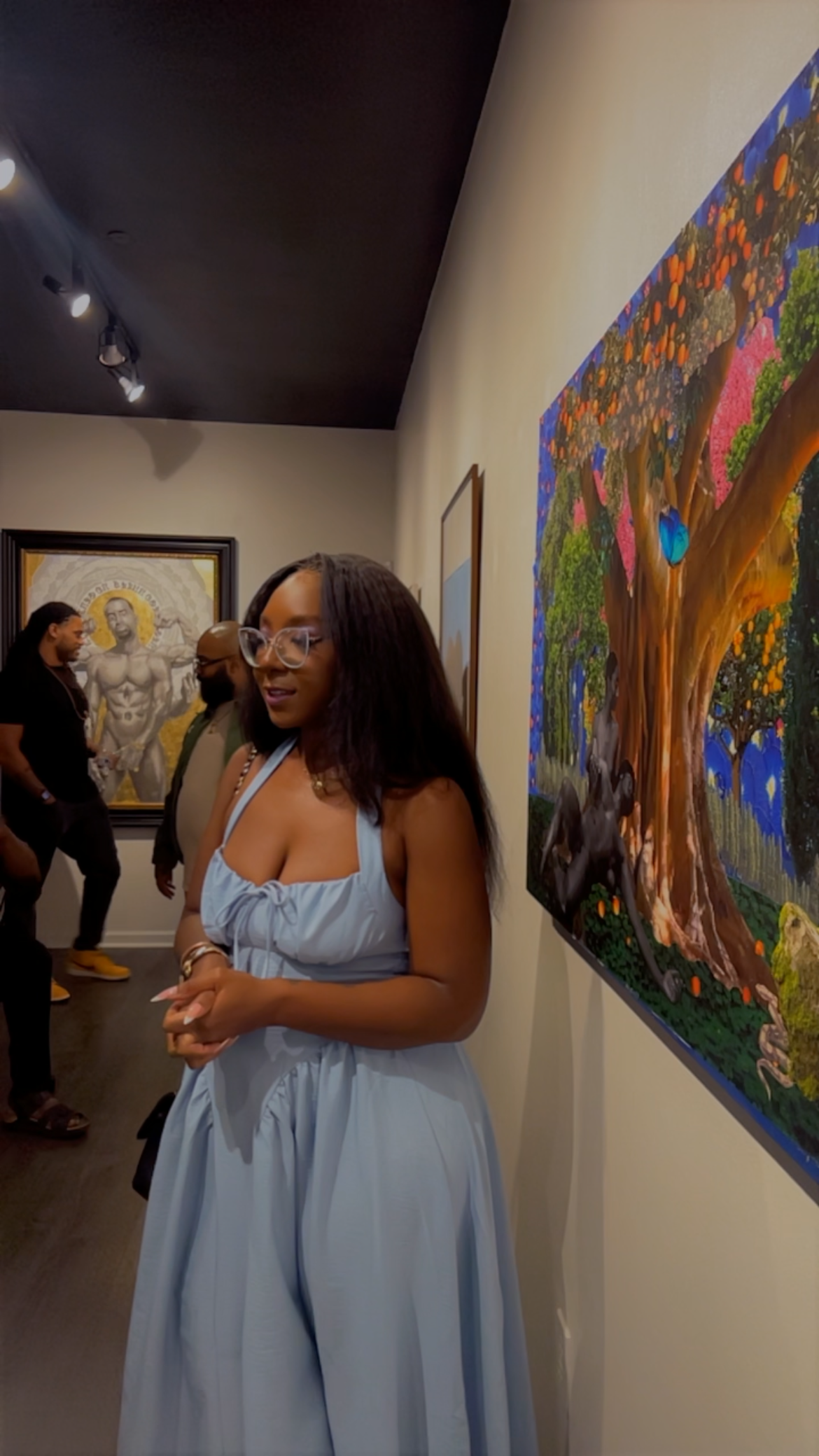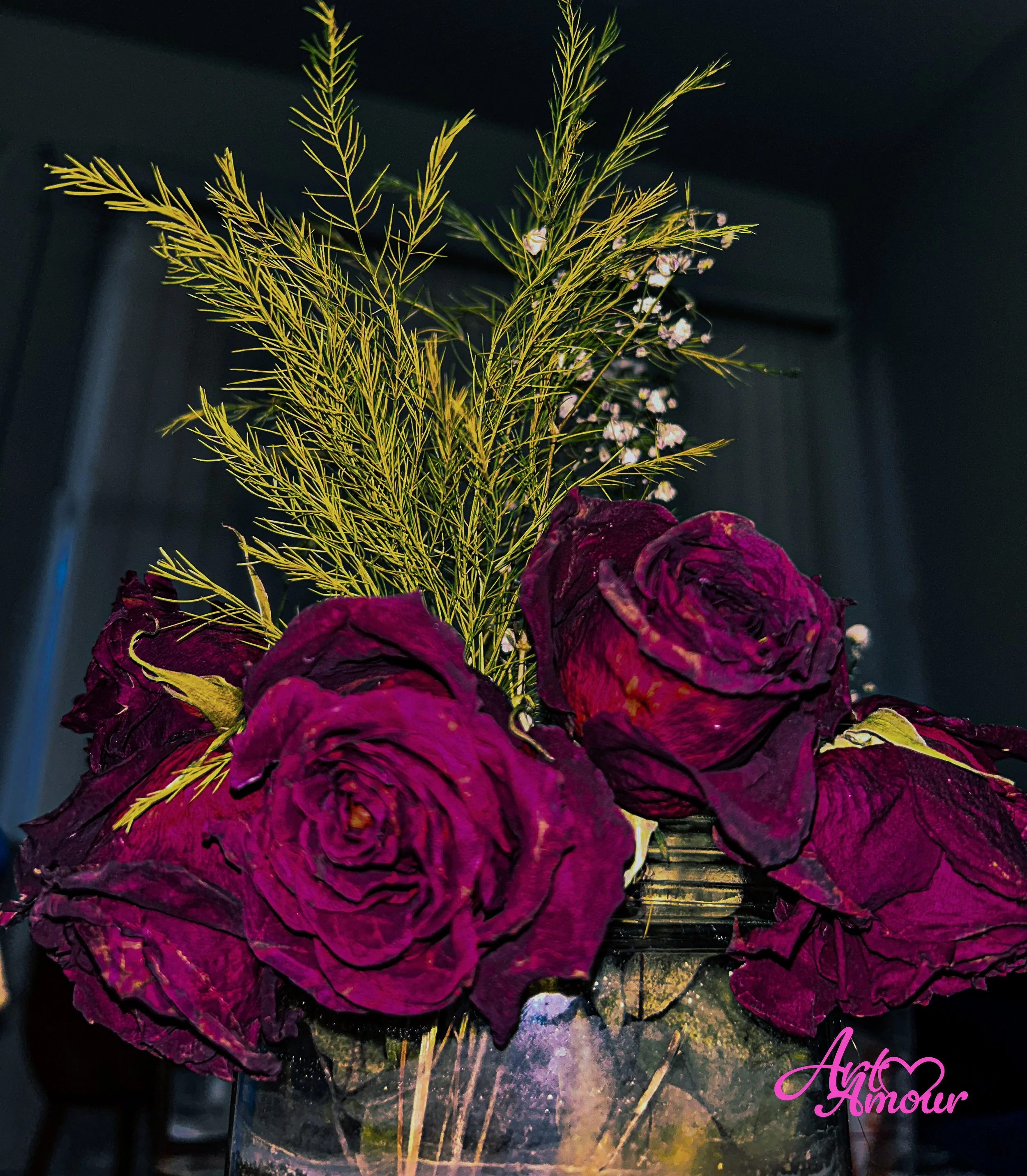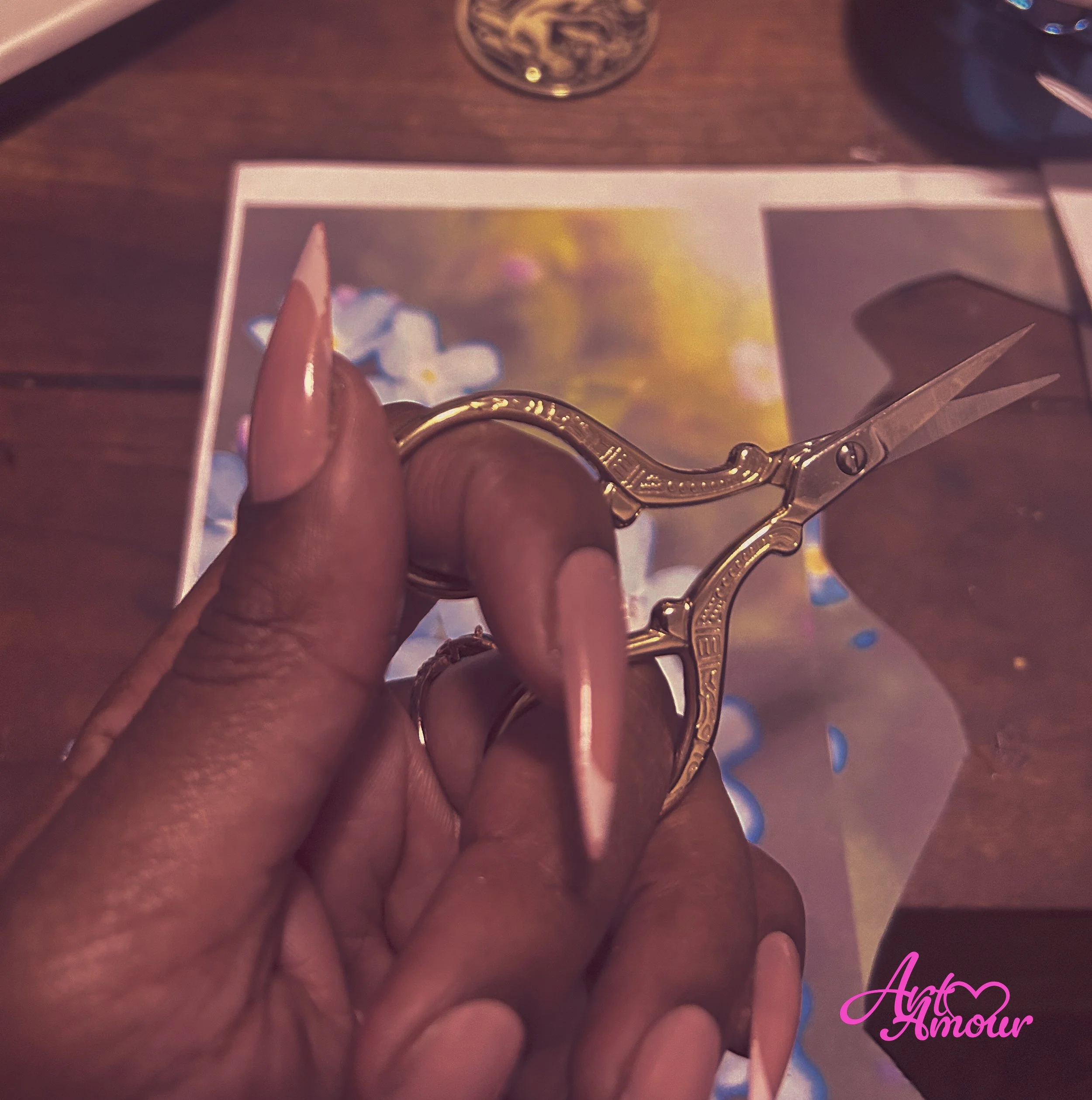The Art of Collage: Transforming Everyday Images into Stories
Collage is more than paper and glue… It’s a language of memory, flowers, and transformation. In this blog, I share how I use collage to turn everyday images into layered stories of resilience, vulnerability, and beauty.
Collage gives me a language, but flowers give me a dialect all my own. Each bloom carries its own story, a symbolism passed down through centuries, and I use them the way a poet uses words…Roses for love and tragedy, forget-me-nots for remembrance, dandelions for resilience, magnolias for grace.
When I layer flowers into my collages, I’m not just decorating, I’m speaking. I’m building a visual vocabulary of femininity, memory, and transformation. Flowers let me say the things I can’t always name out loud. They become stand-ins for emotion, for history, for the parts of myself and my community that deserve to be honored and seen.
Sometimes I think of collage as gardening with paper and memory. 🌿 Each piece is a bed of flowers where fragments, photos, textures, and handwritten words can grow roots together. And just like in nature, there’s beauty in the bloom and in the imperfection of petals that have weathered a storm.
Through this process, I’ve learned that collage isn’t just about what’s pretty, it’s about what’s true. It’s about stitching together contradictions, making space for beauty and brokenness to coexist.
The Storytelling Power of Collage
Every collage I create begins with a story. Sometimes it’s a memory I can’t shake, sometimes it’s a cultural moment I want to respond to, and sometimes it’s just a feeling waiting to be translated. Collage gives me the freedom to hold all of that at once: history, imagination, beauty, and grief layered together until a new truth emerges.
Flowers are central to this storytelling. They act as anchors, guiding the narrative. A single rose placed next to an image of a Black woman might whisper of love, loss, or resilience. Forget-me-nots scattered in the background might point to memory, community, and legacy. A dandelion might be a quiet reminder of strength in the overlooked and ordinary.
What I love about collage is that it honors contradiction. Vulnerability sits next to strength. Beauty leans against decay. Stories overlap, collide, and bloom together in ways that reflect how real life feels messy, layered, but always meaningful.
In that way, collage is more than an art form. It’s a mirror. It shows us how our fragments our histories, our struggles, our small joys can be transformed into something larger than ourselves.
My Process
When I start a collage, I rarely know exactly where it will end. My process is intuitive, part gathering, part listening. I collect images, textures, and materials the way some people collect memories. A photograph, a page from an old magazine, a paint swatch, a pressed flower, all of it has potential to speak.
I lay everything out in front of me like puzzle pieces, waiting to be arranged. I move them around, layer by layer, until something clicks. Sometimes it’s a contrast that draws me in: softness against sharpness, a vibrant bloom against muted tones. Sometimes it’s harmony, the way two fragments feel like they were always meant to belong together.
The flowers always come last, like punctuation. 🌹 They seal the sentence, giving the piece its final tone, whether that’s tender, resilient, tragic, or triumphant.
There’s a lot of trust in this process. Trusting my intuition, trusting the story will reveal itself, trusting that the scraps and fragments can become whole. That’s the magic of collage: it’s never just about what you put together, but what emerges when you let go and allow the pieces to find each other.
For me, collage is more than an art practice, it’s a life practice. It’s proof that fragments can hold beauty, that vulnerability can coexist with strength, and that even the most ordinary image can bloom into something extraordinary when seen with care.
This is the art of collage: transforming everyday images into stories, and reminding us that we are all collages too, layered, complex, and endlessly capable of becoming.
Exhibition Recap: Bare My Soul in Detroit
This past weekend I opened my piece Lore at Norwest Gallery of Art in Detroit for the exhibition Bare My Soul. Curated by Deep Roots Experience, the show explores vulnerability and truth through the lens of art. In Lore, I reimagine Adam and Eve and the origins of shame, transforming a story I grew up with into a reflection on vulnerability as a form of power.
This past weekend, I had the honor of opening my latest work, Lore, at Norwest Gallery of Art in Detroit as part of the Bare My Soul exhibition. Curated by Deep Roots Experience, the show brings together artists from Cleveland and Detroit in a conversation about vulnerability, truth, and what it means to bare ourselves through art.
🌿 My Piece: Lore
My contribution, Lore, reimagines the story of Adam and Eve through a personal lens. At the center stands the Tree of Life, heavy with oranges, while Eve cradles Adam under its branches. A serpent lurks nearby, waiting for its moment. For me, this piece is about confronting the origin of shame, especially the way nudity was tied to sin in the stories I grew up with in a Christian household. Through collage, I wanted to reclaim this moment, not as sin, but as a mirror of vulnerability and the power it holds.
🌹 The Opening Night
The opening was a beautiful exchange of energy. The gallery buzzed with conversation, laughter, and reflection. It was powerful to see people encounter Lore and share their own interpretations, reminders that art doesn’t just live on the wall, it lives in dialogue.
✨ Gratitude
I’m deeply grateful to the Norwest Gallery of Art for hosting, to Deep Roots for curating with vision, and to every artist who shared space in this show. Thank you to everyone who came out to support. It means everything to be seen and celebrated in the community.
🌌 Why Bare My Soul Matters
This exhibition feels like an invitation to be brave, to sit in our own truths without shame. To bare one’s soul is an act of rebellion, of healing, and of connection. And being part of this conversation in Detroit has been both grounding and inspiring for me as an artist.
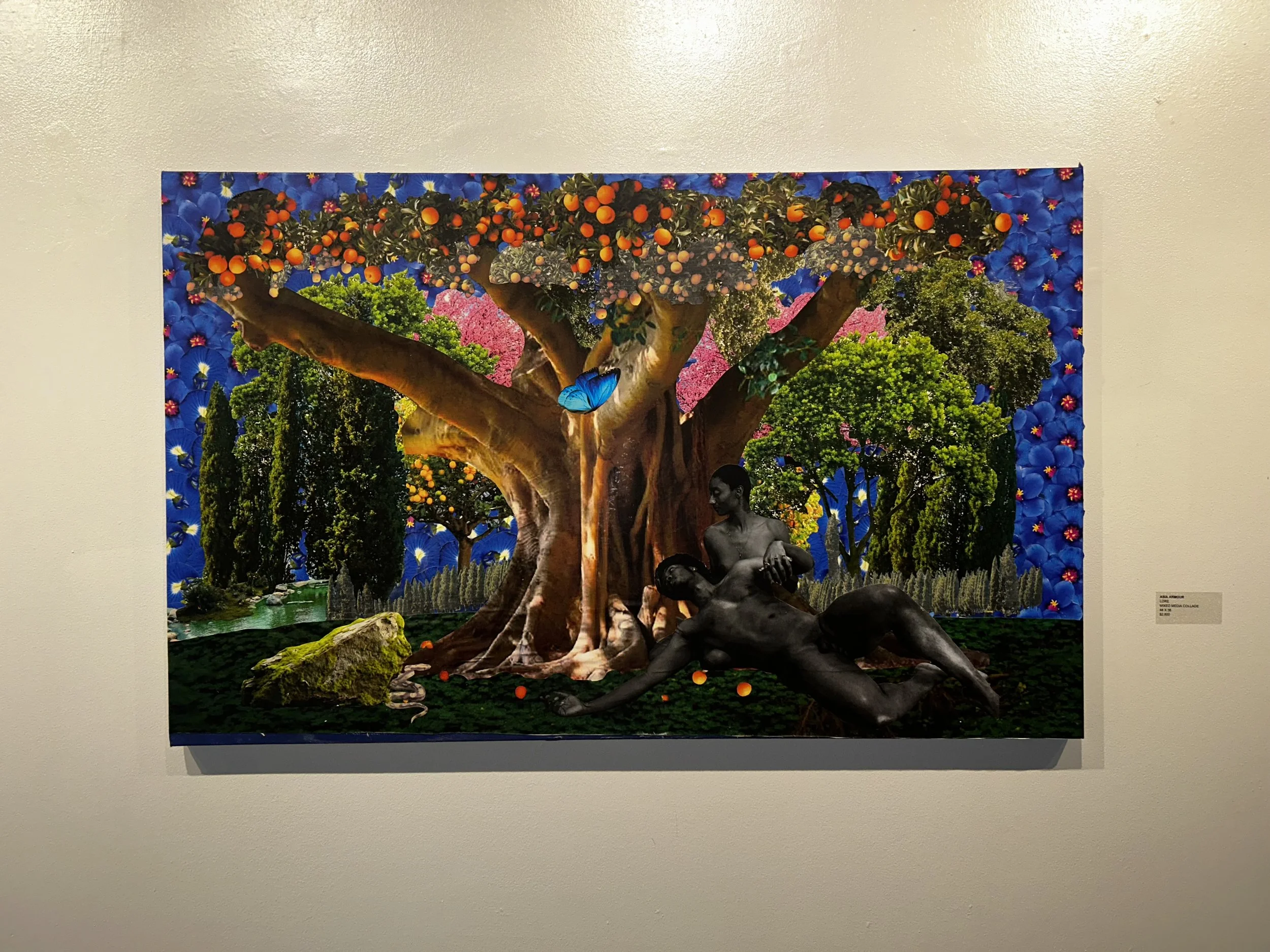
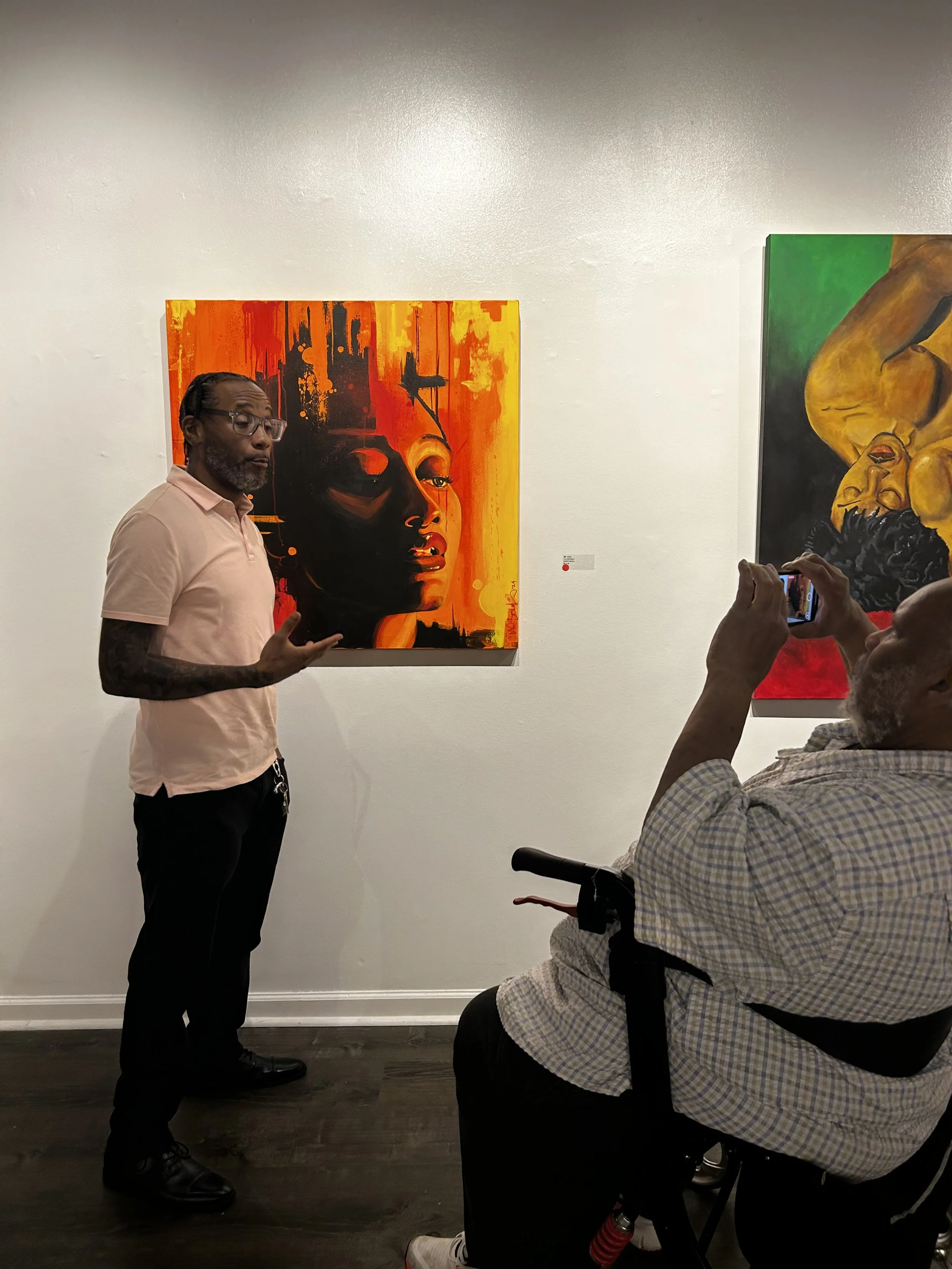
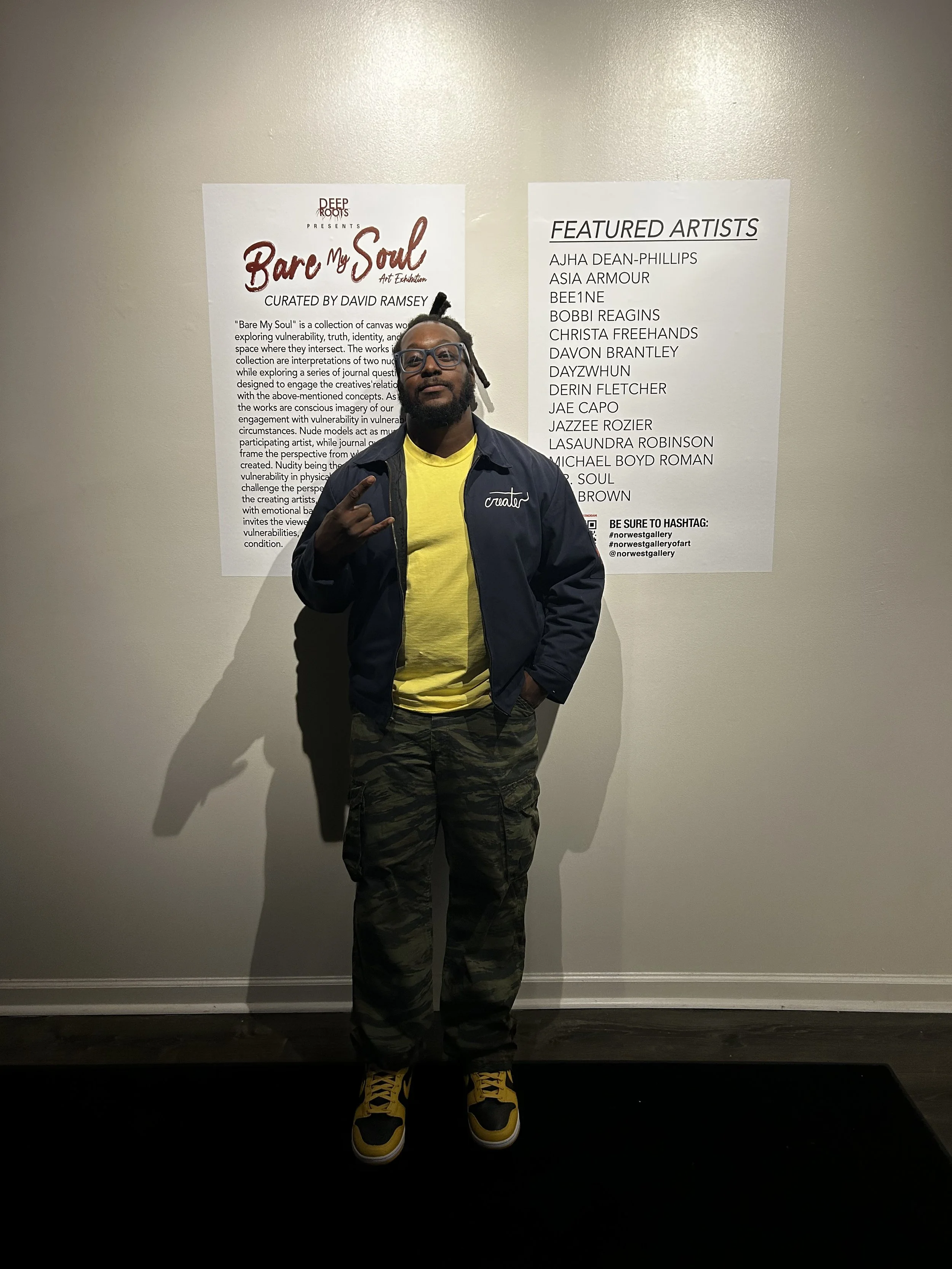
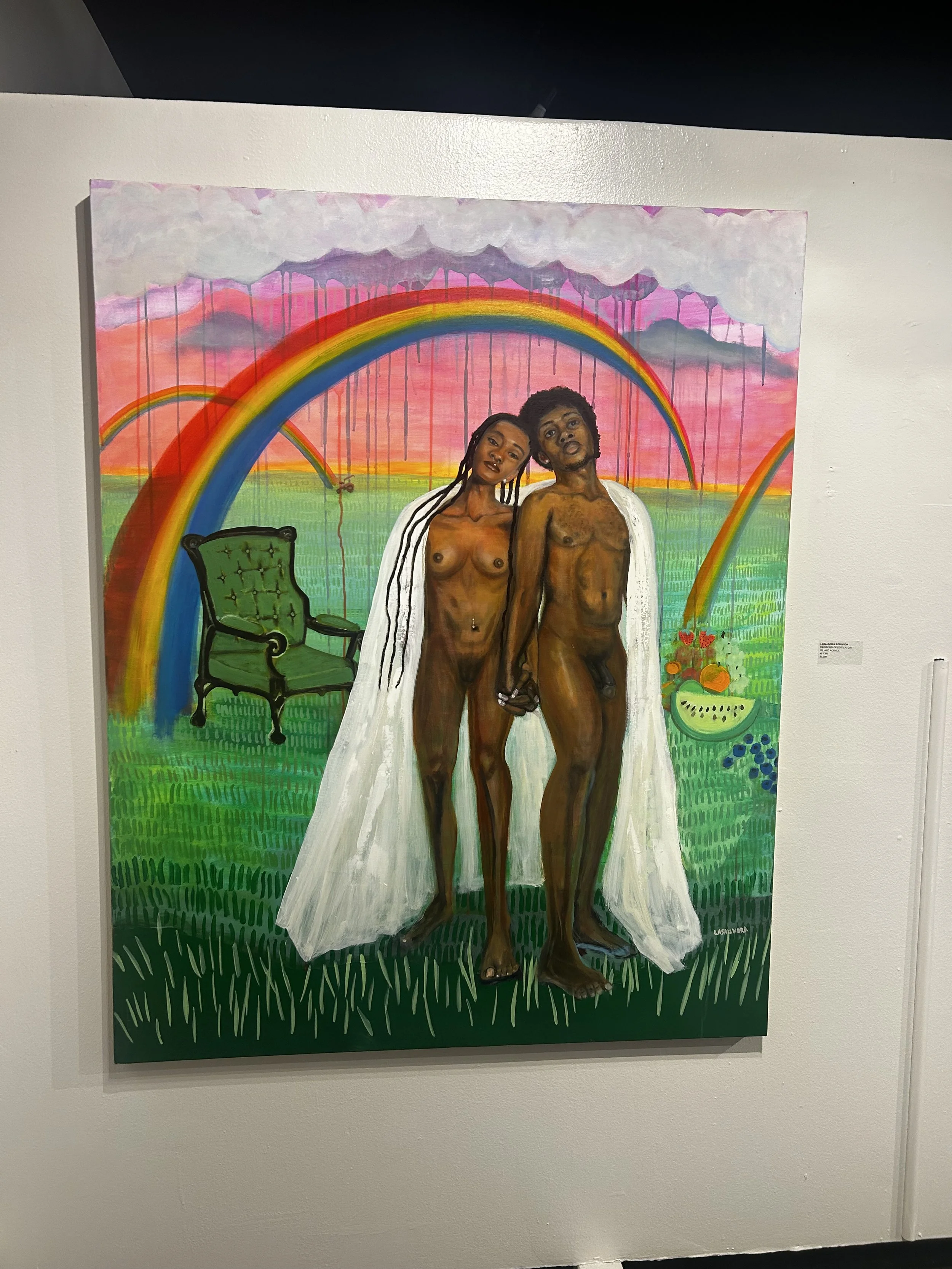
Alchemy of the Artist: When Struggle Sparks Creation
Some of the most luminous art has been born in shadows. In struggle, artists discover an alchemy, transforming grief, heartbreak, and uncertainty into gold. This is where creativity thrives, not despite hardship, but because of it.
Some of the most luminous works of art have been born in shadows. History shows us that when the world feels heavy, artists turn that weight into wings. Out of grief, beauty emerges. Out of heartbreak, transformation is possible. Could this be… a kind of alchemy?
For me, I’ve found that in the moments when life feels the most uncertain, inspiration has a way of slipping in. When you’re stripped down to the core, the excess peeled away, what’s left is raw truth. And raw truth is where art thrives.
Think about it: the Renaissance rose after plague and darkness. The Harlem Renaissance blossomed from oppression and migration. Even on a personal level, some of my strongest pieces came from sitting with pain, questions, and change. In those moments, art wasn’t just expression, it was survival, a way to transmute struggle into beauty.
Alchemy, in the ancient sense, was about turning lead into gold. For the artist, maybe it’s about turning grief into color, heartbreak into texture, struggle into story. It’s not easy, and it’s not always pretty, but it’s powerful.
So the next time life cracks you open, maybe that’s not the end of the story. Maybe it’s the beginning of your masterpiece.
If this resonated with you, share this post with a friend who needs a reminder that even in struggle, transformation blooms.

